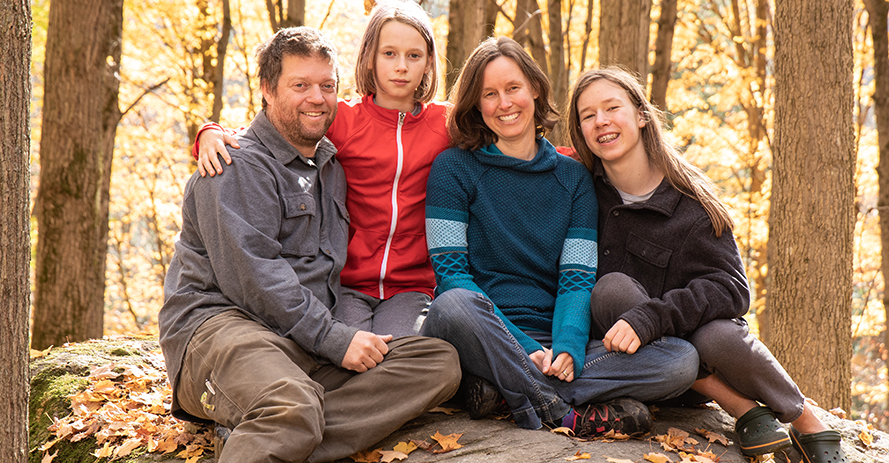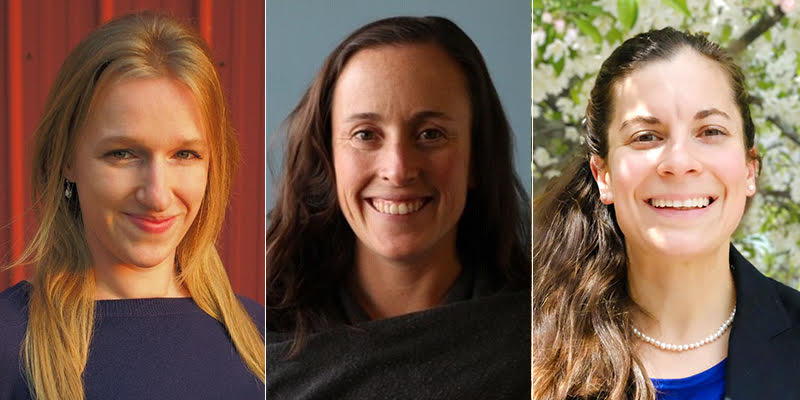For those who choose to make new year’s resolutions, statistics show that 55 percent of those resolutions are health-related—and more than 80 percent of us fail at keeping them by the second week of February.
UVM recently hosted a free webinar, You Can Be Healthier. How to Embark on a Healthy Change Process, led by faculty in UVM’s Integrative Health and Wellness Coaching Certificate Program, Karen Westervelt, PT, ATC, NBC-HWC, Ph.D., David Låg Tomasi, Ph.D., Ed.D.-Ph.D., M.A., MCS, AAT, and Susan Whitman, M.S., in which they explained what health coaches do for clients, the psychology behind behavioral changes, why change often doesn’t succeed, and tips to make resolutions that stick.
Health Behavior Change: The Elephant and the Rider
So why is it so hard to make a change? Whitman uses psychologist Jonathan Haidt’s analogy of “The Elephant and the Rider” to explain. “When we’re thinking about behavior change, it often starts with a should—I should lose weight, I should quit smoking,” Whitman explained. “That’s our head talking. It’s kind of this rational, logical thinking, and that can only get us so far. When push comes to shove, our emotional side often wins out.” In the analogy, the elephant represents our emotional side and the rider, our rational side. The rider is able to see the path ahead, but the elephant, driven by emotion and instinct, provides the power for the journey.
“The rider can direct the elephant for a certain amount of time,” Whitman said. “But eventually, the rider gets exhausted, and the emotional, instinctive side takes over and says, I want a cookie! And it’s all over. So in order to make lasting, sustainable change, we have to appeal to the elephants too. We need to think about our why. Exercise might be what I’m doing— but being able to keep up with my kids on the ski slopes and enjoy family time—that’s my why.”
UVM’s Integrative Health and Wellness Coaching Program
“We started this program because there was such a tremendous need,” Westervelt said. “Our healthcare system is facing so many lifestyle diseases that are costing us huge amounts of money and we need experts that can come in and be an expert in the behavioral change process and guide people.”
The 15-credit Integrative Health and Wellness Coaching Certificate prepares students to be an integrative health and wellness coach and work with individuals to promote healthy lifestyle changes. Integrative health and wellness coaches work with employee wellness programs, community health teams, youth and families, people recovering from addiction, veterans, people with disabilities, and others.
Integrative Health Approach: Treating the Whole Person
“When someone visits a health coach, they want to make a change, they just need a little extra support,” Whitman said. “So the first step is to take stock, kind of do a self-assessment. We use what’s called a ‘wheel of health’ and we think about all the different areas of our health—it’s not just nutrition and exercise—and we think about how they affect each other. All these areas are interconnected.”
Next, Whitman encourages her clients to dream about the future they envision for themselves, writing down three words to describe what they think their life will look like in a year (or two or three) if they don’t keep to their resolution or goal, and then writing down three words to describe what life will look like if they do. These words typically reflect values, emotions, or feelings.
“And these are the things we want to remember because our emotions and our feelings are really what are going to help motivate our behavior,” Whitman said.
When it comes to making goals, Integrative Health and Wellness Coaches provide accountability, acceptance, and support, encouraging clients to focus less on the outcome (losing weight, for example) and thinking more about the actionable (and small!) behavior changes that lead to long-term success. Whitman refers to these as SMART goals:
- Specific
- Measurable
- Actionable
- Realistic
- Time-Bound
The Neural Underpinnings of Positive Behaviors
“One of the things that many of us might struggle with is the gap between thinking about implementing a change and actually following up with it, especially in the long run,” Tomasi said. “There are several neural correlates to this struggle and this is something I find quite intriguing and motivating in itself because it tells us that we are all made up of the same matter—we are all given the same tools—and those tools are ours after all, the brain is ours, so we can use them to our own advantage.”
“Before we rationalize or philosophize about doing any type of change, we have to understand that we can learn by experience, so it’s going to be the experience itself that will nurture the brain to make itself feel better, and as a result, our thoughts will be more positive,” Tomasi continued. “At that point, you almost won the game because you already have a neural correlation to a sense of holistic well-being, so the last portion is just a further implementation of what the brain already perceives as happy before you did it. And so with this last notion I simply want to encourage you to contemplate change of behavior as change of self—you will not only experience a positive result from a physical, psychological, social standpoint, but the fact that you’re even working on it will make you feel better.”
Learn more about UVM’s Integrative Health and Wellness Coaching Certificate.
View the webinar here.




